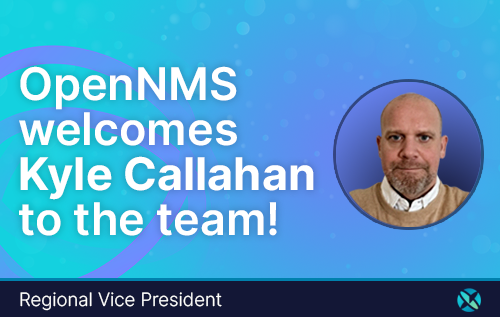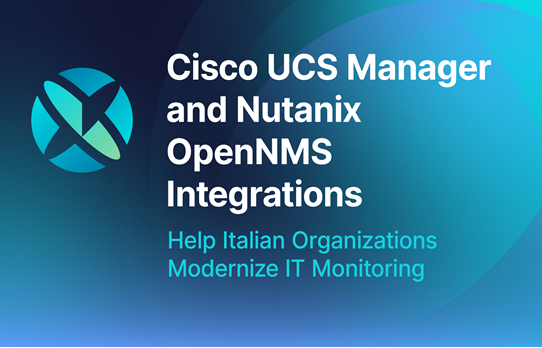In today’s hyper-connected world, networks must be agile, resilient, and highly efficient to meet the demands of increasingly sophisticated services and an ever-growing user base. With the exponential growth in connected devices and data flow, network administrators are often overwhelmed by the sheer volume of alarms and alerts generated daily. Manually filtering through these alarms to identify the real issues is time-consuming and inefficient.
This is where alarm correlation and grouping come into play. By using intelligent tools to group related alarms and filter out the noise, network professionals can focus on what matters most: solving problems faster and keeping the network running smoothly thereby reducing MTTR (Mean Time To Repair).
Enter ALEC, a cutting-edge feature within OpenNMS designed specifically to tackle this challenge with the power of machine learning and real-time analytics.
What is ALEC
ALEC (Architecture for Learning Enabled Correlation) is a machine learning-powered framework that automatically correlates and groups alarms into higher-level “situations,” making it easier to identify the root cause of complex network issues.
At its core, ALEC employs two powerful correlation engines:
Deep Learning Engine: Utilizes neural networks to recognize patterns across alarms, enabling the detection of complex relationships between events that might otherwise go unnoticed.
Clustering Engine: Uses the DBSCAN algorithm to group alarms based on their similarity and proximity, making it easier to understand which events are linked.
Together, these engines allow ALEC to reduce alert fatigue and streamline root cause analysis. Rather than treating each alarm as an isolated incident, ALEC contextualizes them—highlighting the real problem beneath a sea of symptoms.
In any fast-paced industry, where seconds of downtime can lead to significant customer dissatisfaction and revenue loss, having a tool like ALEC is a game-changer. It empowers network operators to work smarter, not harder, by automating the most labor-intensive parts of event analysis.
How Alarm Correlation and Grouping Benefit Network Operations
Alarm correlation and grouping aren’t just technical perks—they’re strategic advantages. Here’s how ALEC can transform network operations:
Reduces Noise and Alert Fatigue: Not every alarm needs immediate attention. By clustering related alarms into situations, ALEC helps teams prioritize what truly matters.
Accelerates Root Cause Analysis: ALEC highlights the most likely source of issues, enabling faster diagnostics and quicker resolutions.
Enhances Operational Efficiency: By automating alarm correlation, network teams can spend less time triaging and more time improving the network.
Supports Proactive Maintenance: ALEC’s insights allow businesses to act before small issues escalate, minimizing unplanned downtime.
How ALEC Improves Network Performance and Reliability
Network performance and reliability are critical in the telecom industry, and ALEC significantly enhances these aspects through its intelligent management capabilities. By automatically correlating and analyzing network events, ALEC helps identify potential issues before they impact service quality. This proactive approach minimizes downtime and ensures a consistent user experience.
Furthermore, ALEC's comprehensive monitoring tools provide real-time visibility into network performance metrics. This allows network administrators to quickly identify and address bottlenecks, optimize resource allocation, and maintain high levels of service reliability. The result is a robust network infrastructure that can support the demanding needs of modern telecom services.
Improving Network Performance and Reliability with ALEC
Network performance is not just a metric—it's a commitment to customer satisfaction. ALEC helps uphold that commitment by ensuring your network stays healthy and responsive.
By analyzing alarms in real time and correlating them intelligently, ALEC helps prevent minor issues from becoming major outages. Its proactive approach to network monitoring allows for early intervention, ensuring a smoother and more reliable service experience for end users.
Additionally, ALEC provides deep visibility into network performance through its monitoring tools, enabling administrators to reduce MTTR (Mean Time to Repair) by:
The result? A resilient, responsive network ready to meet modern demands.
Getting Started with ALEC: A Step-by-Step Guide
Ready to bring ALEC into your telecom operations? Here’s how you can get started:
Final Thoughts
Maintaining network reliability while managing complexity is a constant challenge. Tools like ALEC offer a more innovative way to stay ahead, automating the heavy lifting of alarm analysis, highlighting what truly matters, and driving proactive network management.
Whether you’re looking to reduce downtime, increase operational efficiency, or simply gain a clearer picture of your network’s health, ALEC provides the intelligence and automation your team needs to succeed.
Take the next step—embrace intelligent alarm correlation and unlock the full potential of your network operations with ALEC.





